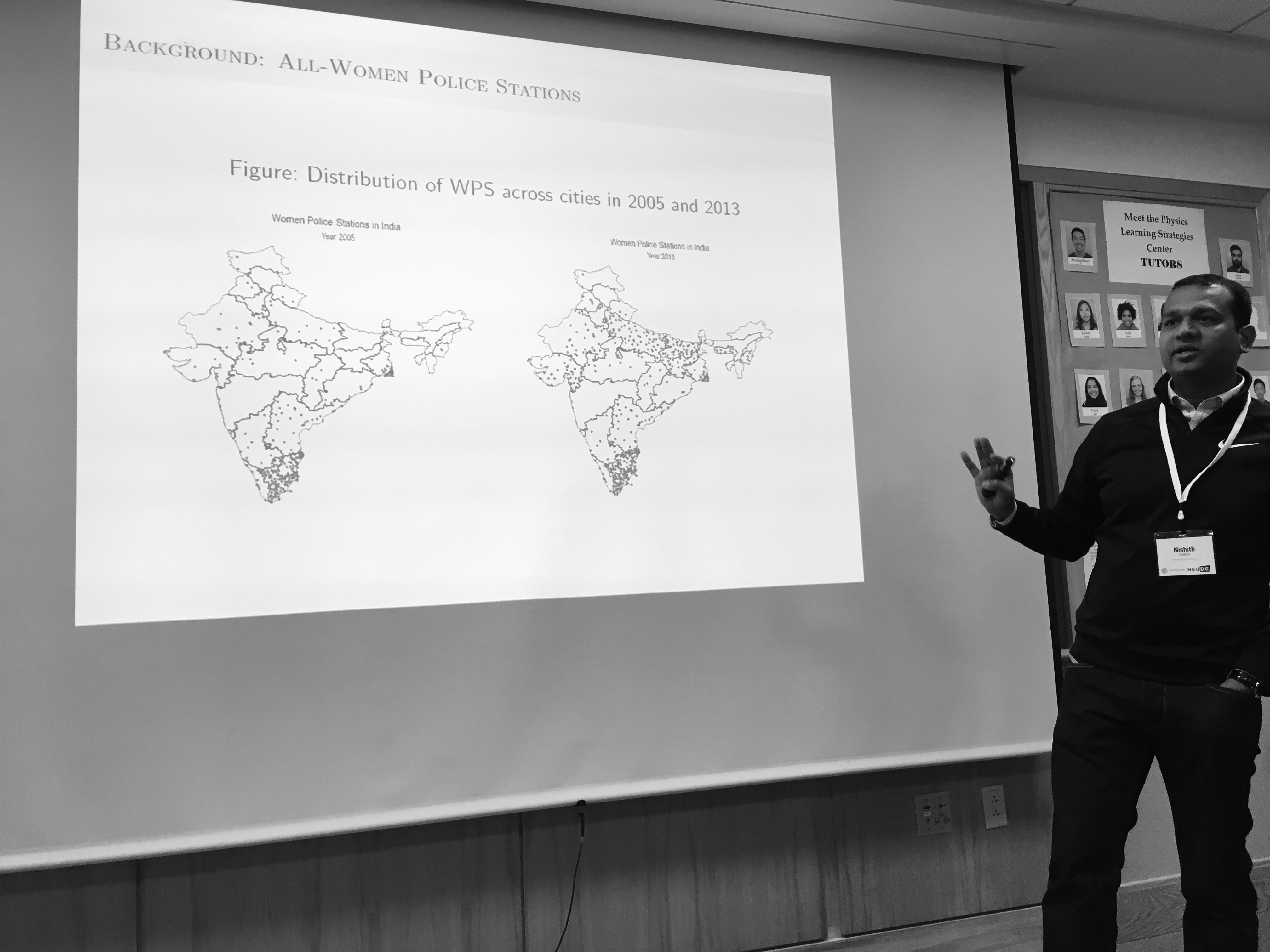Much of the recent #MeToo movement has been focused around work place harassment and its devastating consequences for women at the work place and in public life. In private life, a violent partner can be emotionally, physically and financially devastating to economic productivity and empowerment.**
In this blog, I draw on the diverse topical academic research presented at NEUDC 2018 to elucidate the importance of a gender-neutral home and work environment for women’s empowerment. By tying together some amazing academic research that I heard at NEUDC 2018, I hope to bring more nuance to the discussions on why a gender neutral home and work environment is important.
Challenges starting in Childhood – Beliefs matter
Have you ever heard someone mention in passing that boys are better at math? Alex Eble (et al) presented findings showing that there is no reality attached to this argument. However, this common belief is so pervasive, that over time, girls started believing it themselves. How can such persistent beliefs be changed? One fix in the short run would be to sensitize boys at school about these incorrectly held beliefs. Tarun Jain (et al), showed research that gender sensitization workshops helped change beliefs on gender stereotypes and made boys more sensitive and aware. After the workshop, they reported helping around the house. Girls on the other hand, were less responsive, they showed no change in the home related labor. These results point out an important fact about intra-household dynamics. Girls have less control over their labor and education outcomes. Abu Sonchoy (et al) showed that when households received unconditional cash transfers, they were more likely to send girls to schools. However, they reduced spending on quality enhancing education goods, such as private tuition for girls, in favor of boys. These quality enhancing goods were important to ensuring better school performance.
Thus, in summary, beliefs and behavior of parents create the first set of disadvantages to women in access to education. Given that the labor market returns to education are increasing, these disadvantages tend to impact a girls future labor income, further entrenching parental belief that girls are less valuable that boys.
Challenges in the late-teens
Girija Borker, presented evidence that safety on the streets was an important input into women’s educational outcomes. High ability women ended up attending a lower ability college if there was a safer route from their homes to their universities.
This is an important finding, as college quality determines where you get jobs, where you start in your job, and how you are eventually promoted. Choosing a low ability college creates an additional cost for labor force participation and affects future returns.
Effects of marital violence
According to Puranjit Rochowdury (et al), the age at marriage was a good predictor of physical violence in marriages. Younger women reported more physical violence in their marriages. Nishit Prakash (et al), showed that opening women friendly police station increased reporting of crimes against women, but did not lead to more arrests. Lack of institutional capacity increased follow-up costs, and cultural beliefs about marriage imposed hidden costs for women to follow through on their reports. Johannes Haushofer (et al), showed that cash transfers to men increased their distaste for violence and thus reduced physical violence. When women received these transfers, they reported lower physical and sexual violence.

These researchers highlighted the role of poverty, lack of institutional capacity & the lack of bargaining power – that often impacts violence in marriages and thus imposes a social cost for labor force participation for women.
An important solution against violence is to increase women’s labor supply. Manuel Alejandro Estefan Davilla, showed that increasing employment opportunities, increases women’s probability of divorcing husbands who were more violent or financially unsupportive. However, this might backlash as some men sense this shift in power and thus prevent wives from working. Matt Lowe (et al), showed us that it matters to whom information about employment opportunities are shared, and how couples communicate with each other. When men feel threatened about their role in the marriage and their loss of power due to their wife’s gain in employment, wives decreased their labor force participation.
These results highlighted the role of social perceptions, as well as geographical proximity to jobs and occupational choice, that increase the costs of women’s labor market participation.
Intra-household decision making
Much of the literature on gender shows us that women often make decisions that are in the best interest of their household members compared to men. Caitlin Kieran (et al) showed us that for this to hold true, it matters what women are deciding on, and whether they are informed. In households where couples separate decision making based on comparative advantages in knowledge, resource allocations were associated with better health outcomes and consumption. Intra-household cooperation and communication also mattered to how household members shared resources. Carolina Castilla (et al), showed that non-cooperative partners did a better job guessing how much their spouses would share with them. Rosella Calvi (et al) showed that women can in fact be ‘poor’ in health & consumption outcomes, even if they lived in non-poor households.
In conclusion, women face an uphill battle, which often begins at home in early childhood. Later in life, these structural problems tend to reinforce costs of labor market participation. Even those of us who survive this process, we are aware that child care may eventually place a large labor market premium on our careers. Given the persistence of deviant bosses and threat of losing our credibility, women can still pay an unbearable premium for speaking out!
**Disclaimer – italicized text are author’s opinions and reflections. In order to read more about the methodology and results, please read the papers – the links are attached to the author names.

